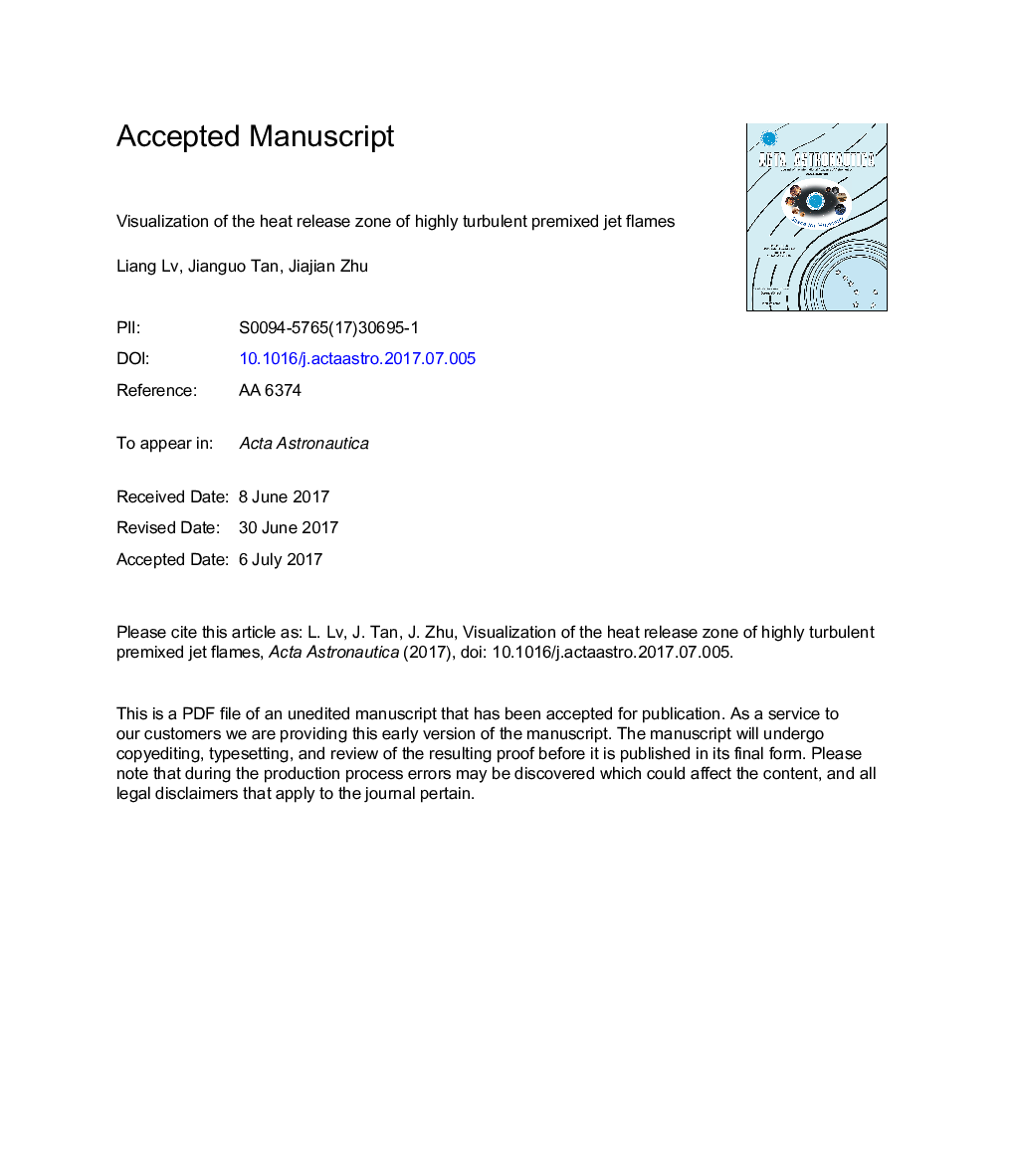| Article ID | Journal | Published Year | Pages | File Type |
|---|---|---|---|---|
| 5472269 | Acta Astronautica | 2017 | 25 Pages |
Abstract
Visualization of the heat release zone (HRZ) of highly turbulent flames is significantly important to understand the interaction between turbulence and chemical reactions, which is the foundation to design and optimize engines. Simultaneous measurements of OH and CH2O using planar laser-induced fluorescence (PLIF) were performed to characterize the HRZ. A well-designed piloted premixed jet burner was employed to generate four turbulent premixed CH4/air jet flames, with different jet Reynolds numbers (Rejet) ranging from 4900 to 39200. The HRZ was visualized by both the gradient of OH and the pixel-by-pixel product of OH and CH2O. It is shown that turbulence has an increasing effect on the spatial structure of the flame front with an increasing height above the jet exit for the premixed jet flames, which results in the broadening of the HRZ and the increase of the wrinkling. The HRZ remains thin as the Rejet increases, whereas the preheat zone is significantly broadened and thickened. This indicates that the smallest turbulent eddies can only be able to enter the flame front rather than the HRZ in the present flame conditions. The flame quenching is observed with Rejet = 39200, which may be due to the strong entrainment of the cold air from outside of the burned gas region.
Keywords
Related Topics
Physical Sciences and Engineering
Engineering
Aerospace Engineering
Authors
Liang Lv, Jianguo Tan, Jiajian Zhu,
